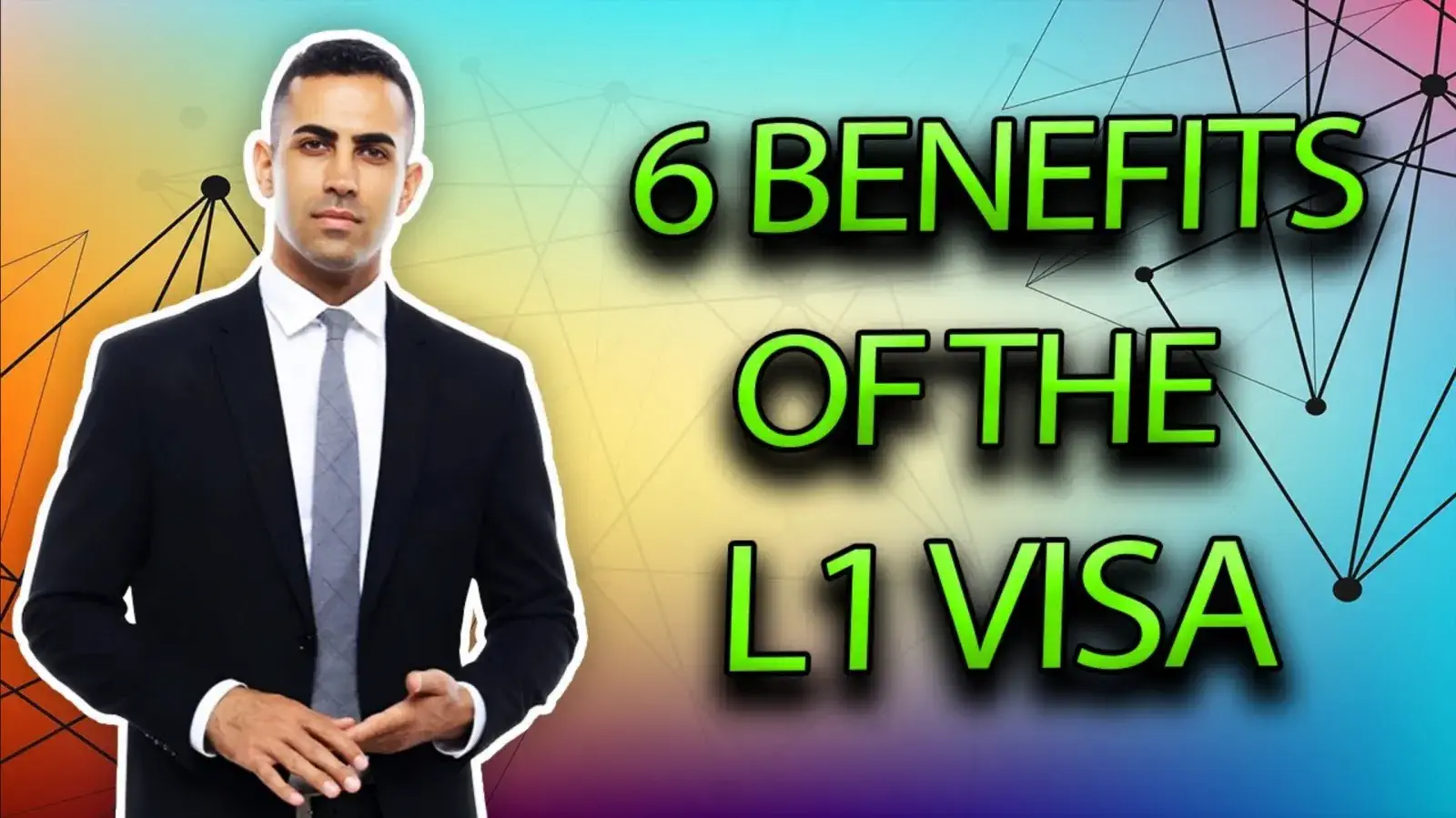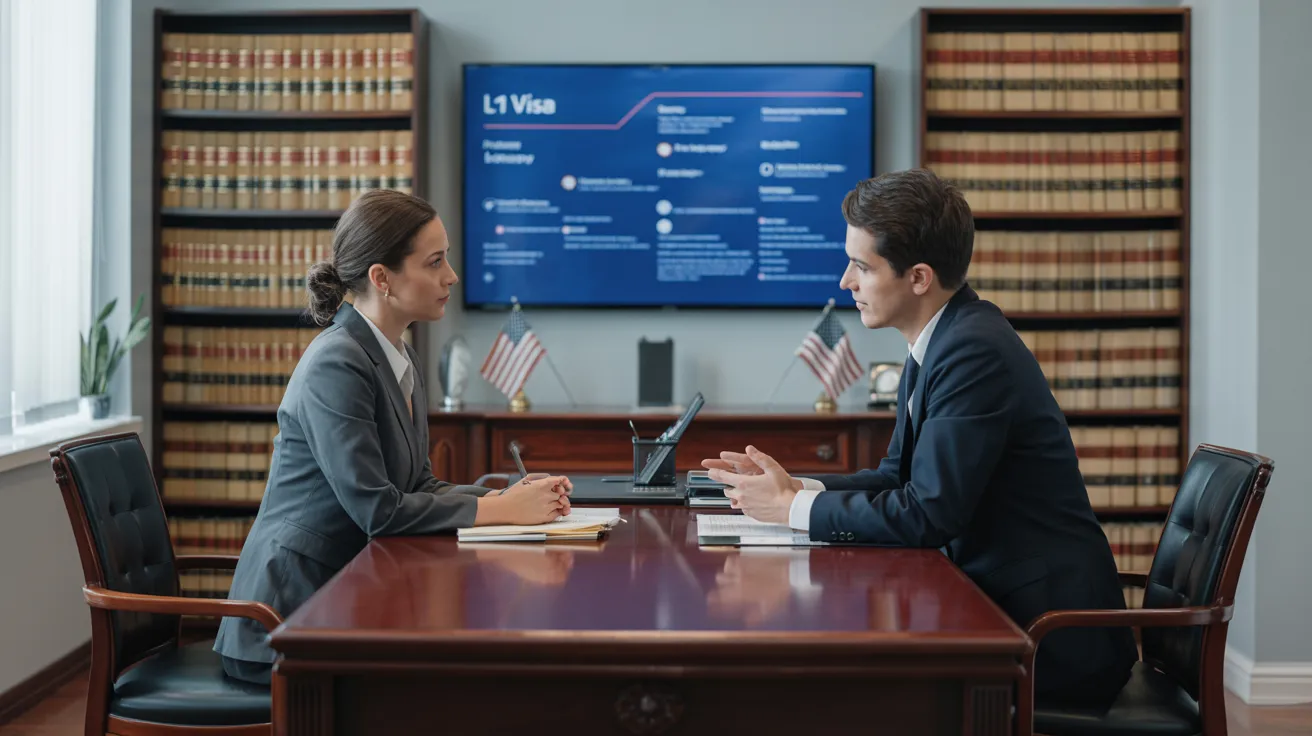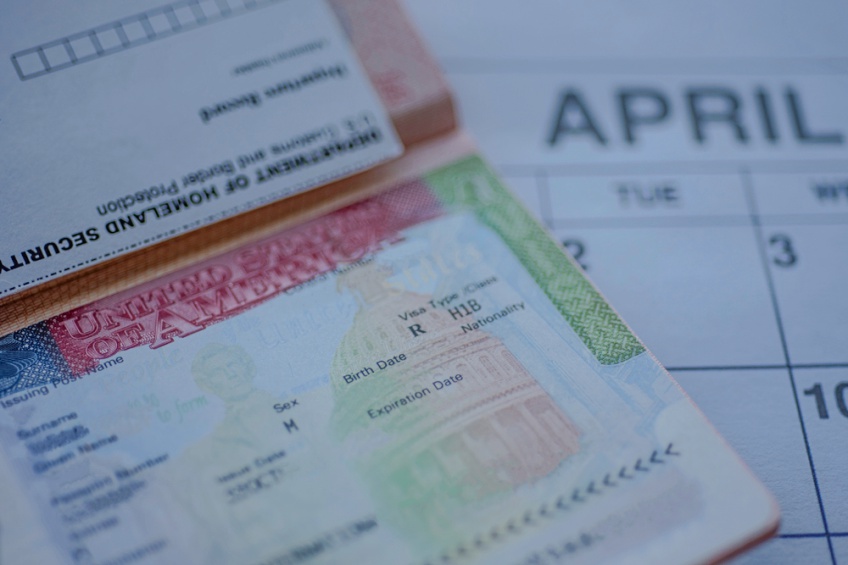Whatever You Need to Find Out About the L1 Visa: Benefits, Requirements, and Much more
The L1 Visa acts as a crucial tool for international firms seeking to move staff members to the United States, facilitating both operational performance and the transfer of specialized knowledge. With distinctive categories for executives and specialized specialists, this visa provides many advantages, including potential paths to long-term residency. Understanding the eligibility requirements and application process is essential for an effective shift. As we analyze the details of the L1 Visa, it ends up being clear that navigating its intricacies is extremely important for companies aiming to leverage global ability successfully. What obstacles might you run into along the road?
Review of the L1 Visa
The L1 visa is a non-immigrant category that enables companies to transfer employees from foreign workplaces to their united state branches, subsidiaries, or affiliates. This visa category is particularly beneficial for international corporations looking for to leverage their international skill swimming pool by transferring crucial workers to enhance operations in the USA. The L1 visa is separated right into two main subcategories: L1A for supervisors and execs, and L1B for employees with specialized knowledge, each dealing with various organizational needs.The L1 visa promotes the smooth movement of certified staff members, thereby fostering international organization development and functional performance. With the L1A visa, companies can move people that hold supervisory or executive duties, permitting them to make strategic decisions and look after details departments within the united state entity. Alternatively, the L1B visa is made for workers possessing specialized expertise vital to the company's rate of interests, ensuring that the U.S. workplace take advantage of special abilities and expertise.One remarkable advantage of the L1 visa is its double intent nature, which allows holders to get long-term residency while maintaining their non-immigrant status. Furthermore, partners and youngsters of L1 visa holders can accompany them to the USA under the L2 visa classification, which likewise permits for job authorization
Kinds Of L1 Visas
Several kinds of L1 visas satisfy the varied requirements of multinational companies looking to transfer staff members to the USA. The two key classifications of L1 visas are L1A and L1B, each created for details roles and obligations within an organization.The L1A visa is meant for managers and executives. This category permits firms to move people that hold managerial or executive positions, enabling them to manage procedures in the U.S. This visa stands for a first period of up to three years, with the possibility of expansions for a total amount of up to seven years. The L1A visa is specifically useful for business seeking to establish a strong management visibility in the U.S. market.On the various other hand, the L1B visa is assigned for employees with specialized understanding. This consists of people who have sophisticated expertise in certain areas, such as exclusive modern technologies or special processes within the company. The L1B visa is also legitimate for an initial three-year period, with extensions offered for approximately five years. This visa group is perfect for firms that require workers with specialized skills to improve their procedures and preserve an affordable edge in the U. L1 Visa Qualifications.S.Both L1A and L1B visas permit twin intent, suggesting that visa owners can obtain long-term residency while on the visa. Understanding the differences in between these 2 categories is essential for businesses planning to navigate the complexities of worker transfers to the United States properly
Qualification Demands
To get approved for an L1 visa, both the company and the worker should meet particular qualification standards set by U.S. immigration authorities. The L1 visa is created for intra-company transferees, allowing multinational firms to transfer workers to their U.S. offices.First, the company must be a certifying organization, which implies it must have a moms and dad firm, branch, subsidiary, or associate that is operating both in the united state and in the international nation. This connection is crucial for demonstrating that the staff member is being moved within the very same corporate structure. The employer has to also have actually been doing business for at the very least one year in both locations.Second, the employee should have been employed by the international firm for at the very least one continuous year within the three years preceding the application. This employment has to remain in a supervisory, executive, or specialized knowledge ability. For L1A visas, which accommodate managers and execs, the staff member should demonstrate that they will proceed to run in a comparable capacity in the U.S. For L1B visas, planned for workers with specialized knowledge, the individual have to have unique proficiency that contributes substantially to the business's procedures.
Application Process
Navigating the application process for an L1 visa includes a number of important steps that have to be completed accurately to assure a successful end result. The very first step is to establish the suitable classification of the L1 visa: L1A for managers and execs, or L1B for employees with specialized understanding (L1 Visa Requirements). This distinction is considerable, as it influences the documents required.Once the classification is identified, the united state company should file Form I-129, Petition for a Nonimmigrant Worker. This form needs to include in-depth info about the business, the employee's duty, and the nature of the work to be performed in the U.S. Accompanying documentation generally consists of proof of the partnership between the U.S. and foreign entities, evidence of the worker's certifications, and info pertaining to the job offer.After entry, the united state Citizenship and Migration Solutions (USCIS) will certainly assess the petition. If authorized, the employee will be notified, and they can then obtain the visa at an U.S. consulate or consular office in their home nation. This involves finishing Form DS-160, the Online Nonimmigrant copyright, and arranging an interview.During the interview, the candidate should offer different files, consisting of the accepted Type I-129, evidence of work, and any additional supporting evidence. Complying with the interview, if the visa is approved, the worker will certainly receive a visa stamp in their key, permitting them to get in the U.S. to help the funding company. Proper preparation and comprehensive documentation are vital to navigating this procedure successfully
Advantages of the L1 Visa
Among the remarkable benefits of the L1 visa is its capability to facilitate the transfer of essential workers from worldwide workplaces to the United States. This visa is particularly helpful for multinational firms looking for to preserve consistency in procedures and management across boundaries. By permitting executives, supervisors, and specialized employees to function in the U.S., organizations can guarantee that their most essential talent is available to drive business objectives.Another substantial benefit of the L1 visa is its reasonably simple application process contrasted to various other job visas. Organizations can petition for the L1 visa without the requirement for a labor accreditation, which enhances the recruitment of foreign staff members. The visa can be provided for a first duration of up to 3 years, with the possibility of extensions, promoting long-term assignments.The L1 visa additionally offers a course to long-term residency. Workers on L1A visas (for supervisors and execs) can request an Environment-friendly Card after one year, accelerating their change to irreversible status. This attribute is an eye-catching incentive for talented individuals trying to find stability in the U.S. workforce.Additionally, L1 visa owners can bring their prompt relative to the united state under L2 standing, permitting spouses and children to live and examine in the nation, enhancing the total charm of this visa classification. On the whole, the L1 visa functions as a crucial tool for worldwide organizations, fostering cross-border collaboration and talent mobility.
Typical Difficulties
While the L1 visa offers numerous benefits for multinational business and their workers, it is not without its challenges. One noteworthy hurdle is the stringent paperwork and qualification needs imposed by the U.S. Citizenship and Migration Solutions (USCIS) Companies need to offer comprehensive evidence of the international staff member's credentials, the nature of the service, and the certifying partnership in between the united state and international entities. This procedure can be time-consuming and may call for legal proficiency to navigate successfully.Another challenge is the potential for examination during the petition procedure. USCIS officers might examine the authenticity of business operations or the staff member's function within the company. This scrutiny can lead to hold-ups or also denials of the copyright, which can considerably impact the company's functional strategies and the employee's occupation trajectory.Furthermore, the L1 visa is tied to the sponsoring employer, which means that task changes can make complex the visa status. If an L1 visa holder wishes to switch over employers, they must often go after a different visa group, which can include complexity to their migration journey.Lastly, maintaining compliance with L1 visa policies is crucial. Employers have to ensure that their employee's duty aligns with the initial application which business remains to meet the qualification needs. Failure to do so can cause retraction of the visa, influencing both the employee and the organization. These difficulties necessitate comprehensive preparation and ongoing management to ensure a successful L1 visa experience.
Tips for Success


To effectively navigate the L1 visa process, thorough prep work is crucial. Begin by extensively understanding the specific requirements for the L1 visa category you are making an application for, whether L1A for supervisors and executives or L1B for workers with specialized understanding. Collect all necessary documents early while doing so, including proof of your work history, business structure, and the nature of business operations.Engage lawful counsel experienced in migration regulation to lead you through the complexities of the application. An attorney can assist assure that your application is total, exact, and engaging. They can also assist in getting ready for prospective requests for proof (RFEs) by proactively resolving areas that might increase questions.Additionally, preserve clear communication with your employer, that have to provide essential support L1 copyright copyright for your application. Validate that they recognize their responsibilities, including submitting the necessary requests and providing paperwork that substantiates your function in the organization.Prepare for the visa interview by exercising response to typical inquiries regarding your professional history and the nature of your work. Demonstrating self-confidence and clearness can considerably influence the result of your application.
Regularly Asked Concerns
Can Household Members Accompany L1 Visa Owners?
Yes, member of the family can go along with L1 visa owners. Partners and unmarried kids under 21 years of ages are eligible for L2 visas, which allow them to live and study in the USA throughout the L1 holder's stay.
For How Long Can L1 Visa Holders Remain In the U.S.?
L1 visa holders can initially remain in the united state for up to three years. This duration might be extended, enabling an optimum keep of 7 years for L1A visa owners and five years for L1B visa holders
Is the L1 Visa a Double Intent Visa?
The L1 visa is thought about a double intent visa, allowing owners to pursue permanent residency while preserving their temporary non-immigrant condition. This adaptability promotes long-lasting occupation opportunities for international employees within united state business.

Can L1 Visa Holders Apply for a Permit?
Yes, L1 visa holders can request a copyright (L1 Visa). The L1 visa sustains double intent, permitting holders to go after irreversible residency while maintaining their non-immigrant condition, promoting a smoother changeover to a permit
What Happens if an L1 copyright Is Refuted?
If an L1 copyright is rejected, the candidate may get a notice laying out the reasons for denial. They can appeal the choice, reapply, or explore alternate visa alternatives depending upon their conditions and qualifications.
Conclusion
In summary, the L1 Visa serves as a necessary tool for multinational companies looking for to move staff members to the USA. Comprehending the distinctions in between L1A and L1B classifications, in addition to the eligibility requirements and application processes, is crucial for successful navigating of this non-immigrant classification. The advantages provided, consisting of structured applications and paths to permanent residency, additionally improve its charm. L1 Visa Qualifications. Addressing common difficulties properly can bring about a more desirable outcome in the copyright procedure
Comments on “L1 Visa Lawyer Help”